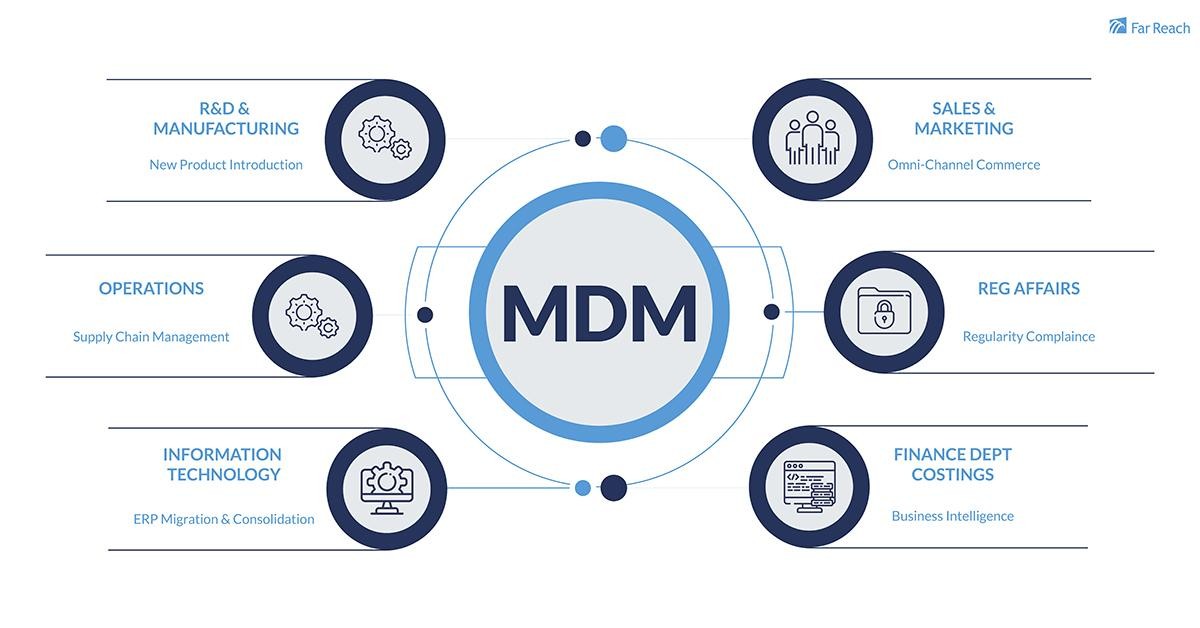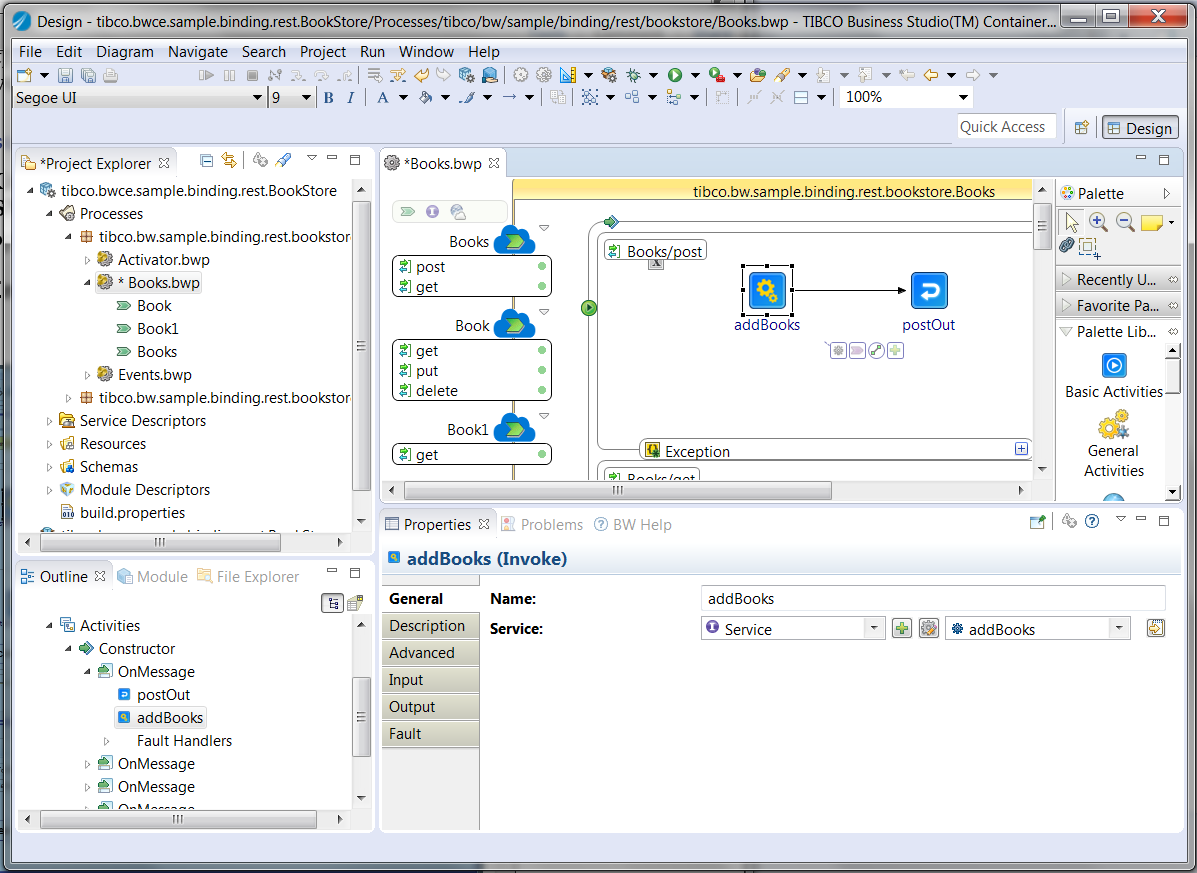Solution: Multi-Domain Master Data Management (MDM)

Multi-Domain Master Data Management (MDM) is a comprehensive solution for managing multiple data domains consisting of various entities with different attributes, enabling businesses to have a consistent and accurate view by bringing multiple data domains and associated processes into a centralized platform.
While MDM ensures the overall master data - the core entities of the enterprise - is consistent, complete, and accurate across the organization, Multi-Domain MDM takes it a step further by integrating all data domains, including both operational and non-operational data, into a single platform. According to Keith Gordon, the data hub structure comprises three layers: reference data, transaction structure data, and enterprise structure data. Defining master data depends on the perspective of each business and is based on the entities considered important in the data domains of that business.
 The three-layer data structure
The three-layer data structure
The phenomenon of information silos in businesses
When core data domains such as customers, products, addresses, etc., are stored dispersed across different application systems, along with inconsistent reflections of master data, it leads to difficulties in aggregation, analysis, and processing of information. Some common examples include the same customer entity having different addresses and phone numbers in the Sales system compared to the Accounting system. Or cases of duplicated, erroneous, non-standardized data due to being stored separately in information systems provided by different vendors.
The reality of isolated information systems (information silos) makes it challenging for managers to make decisions, manage, and operate when they only have a one-sided view of their customers, prompting the need to integrate customer data domains with other product, service domains to obtain a comprehensive view of the entire customer interaction with the business.
Business initiatives with Multi-Domain MDM
Master Data Management (MDM) is a set of technology-based rules that allow business units and IT departments to collaborate to produce an accurate version of master data. The two components of MDM include Policy components – defining the roles and responsibilities of departments in the MDM process, and Technology components – the technologies supporting MDM.

Thành phần của MDM
The Technology component of MDM needs to address two tasks: Entity Resolution (ER) process – when systems refer to one or more entities, this process selects information with high priority and accuracy; and Entity Identity Information Management (EIIM) – maintaining the integrity of entity identity over time, a basic requirement of MDM systems. Thus, master data management is both a technology challenge, integrating data, and an organizational strategy issue, involving the management responsibilities of relevant departments.
Multi-Domain MDM is essential when, in addition to Customer MDM – the most critical value for any organization, businesses also have hundreds or thousands of agents, partners, suppliers, etc. At this point, the sheer volume of data, its continuous changes, and complexity necessitate the deployment of Multi-Domain MDM to manage multiple data domains to facilitate coordination between business units and IT departments.

TIBCO Multi-Domain MDM
TIBCO Multi-Domain MDM
TIBCO Multi-Domain MDM offers several capabilities that empower enterprises:
Modeling Multi-Domain Data: With TIBCO's Multi-Domain MDM solution, businesses can model data across multiple domains such as customers, products, assets, geographic locations, etc., without the need for deploying separate solutions for each.
Data Mastery: Successfully implementing a Multi-Domain MDM solution helps optimize workflow processes, data quality, role-specific applications, data stewardship, and many other applications within the same solution.
Meeting User Data Management Needs: Multi-Domain MDM ensures data integrity on a broad scale, accommodating the data management needs of various enterprise user groups, not just data stewards and developers.
Addressing Operational Challenges with Multi-Domain MDM
The complexity of master data poses significant challenges for most businesses. Failure to adequately address these challenges can lead to increased error rates, customer experience issues, financial inefficiencies, heightened data governance and cybersecurity risks, contributing to a crisis in information trust within the organization. The Multi-Domain MDM model identifies the value of MDM through 8 lenses that address issues in:
Transportation of Data: Often, numerous data integration tools are needed to copy data to where it's needed, rather than pulling from a centralized source.
Data Inventory: Each entity creates a copy of themselves from a shared master data source, leading to inconsistency within the organization.
Data Movement: Individuals sometimes forward the same information to multiple systems, leading to redundancy.
Waiting Time: Waiting for data fixes or IT department access to data is a root cause of operational hindrances.
Over Processing: Remedying data quality issues in local systems instead of consistently addressing them leads to unnecessary tasks and rechecks.
Overproduction: Processing activities that create a plethora of copies from master data, scattered everywhere.
Defects: Operational failures like inefficient processes, inaccurate report analysis, and governance issues.
Skills: Wasting personnel capability and time on data cleaning, re-entry, manipulation, and preparation from various tools like Excel to IT project applications.
Key Functions of Multi-Domain MDM
The key functions that businesses gain with TIBCO's Multi-Domain MDM solution include:
- Easy configuration setup to meet organizational data management requirements, without the need to adjust business processes or data models to fit rigid data models or frameworks provided by vendors.
- User-friendly interfaces that encourage participation from various user groups with varying technical competencies within the organization.
- Enhanced capabilities in practical data management.
- Flexibility in deployment, such as on-premise/cloud or hybrid environments.
- Agile development approach support, accommodating iterative cycles to meet continuously evolving business conditions.
Conclusion
Multi-Domain MDM is an indispensable solution for large-scale enterprises, such as commercial banks, looking to manage vast, diverse, and constantly changing data sources. With millions of potential customers, numerous financial products, and various interactions with organizations and entities, the need for Multi-Domain MDM becomes evident. It addresses complex data challenges effectively.
ENAO is TIBCO's preferred partner in Vietnam, with years of experience in software development and providing outsourcing, consulting, and solution deployment services using advanced technical solutions, helping businesses navigate complex issues in their digital transformation journey.








